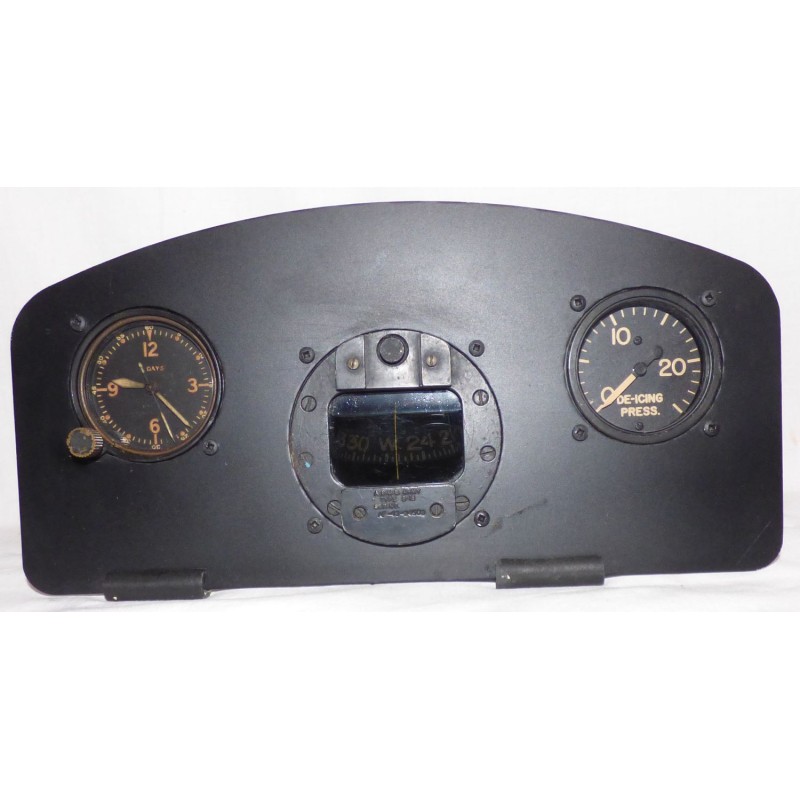

Banner

Banner













USAAF - B17 set compass /watch /DE ICING
 Garanties sécurité
Garanties sécurité
(à modifier dans le module "Réassurance")
 Politique de livraison
Politique de livraison
(à modifier dans le module "Réassurance")
 Politique retours
Politique retours
(à modifier dans le module "Réassurance")
B17 roof set
B16 aero compass: This is a very nice example of the Army Type B-16 Direct Reading Magnetic Compass. This type was used across a number of US Army Air Corps and Air Forces aircraft during WWII, including heavy bombers B-17, B-24, B-29, medium bombers B-25 and B-26.
This example is in great shape, and has a lot of features that were removed later in the war to simplify construction. The front is marked:
A.C. U.S. ARMY
TYPE B-16
SER. No. AF-43-34505
This indicates manufacture in 1943. The top has a data plate with the order and part numbers, and indicates that it was made by the PIONEER INSTRUMENT DIVISION of BENDIX AVIATION CORPORATION, located in BENDIX, NEW JERSEY, U.S.A.
The condition is excellent
A11 clock: US Army Air Corps, or US Army Air Force A-11 Aircraft Clock. The standard aircraft clock for most WWII US Airframes, this clock was so plentiful that it was used in many vintage civilian planes constructed after WWII. The movement is a 22size, mechanical wind, 8-day movement. Makers which built the A-11 clock included Longines-Wittnauer, Elgin, Waltham and Bulova. Unfortunately, parts are not always interchangeable among these clocks.
This is a De-Icing Pressure Indicator for the de-icing system used in WWII US Army Air Forces aircraft such as the B-17 Flying Fortress, B-24 Liberator, and B-29 Superfortress. Made by Electric Auto-Lite with a serial number prefix of AF43, likely made for a US Army Air Force order during 1943. On the B-17G, the indicator appeared on the Pilot's overhead Compass Panel, see illustration from the B-17G Erection and Maintenance Manual in the photos. In the B-24, the indicator was positioned below the co-pilots instrument panel, and on the B-29 it was installed on the flight engineers instrument panel. When the de-icing system is engaged by flipping a toggle switch, the indicator displayed the pressure being applied to the rubber surface de-icer boots along the leading edges of the wings and empennage to dislodge ice which has formed, with a normal indication of 7-10 PSI.
Reference: ALG142
Reference: ALG169
Reference: U2E725
Reference: U2U187
Reference: ALG158

USAAF - B17 set compass /watch /DE ICING
check_circle
check_circle